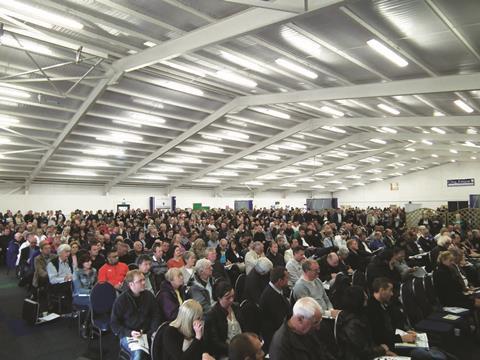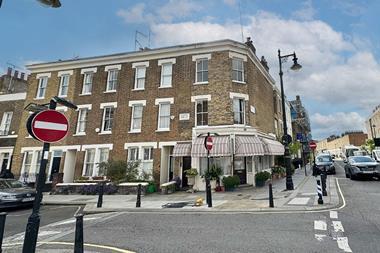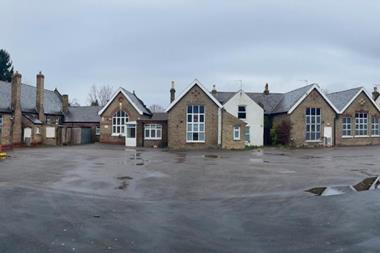It may have been a relatively late adopter where technology is concerned, but the real estate industry is now embracing it.

The auction market has changed enormously over the past few years – and so have the type of buyers coming to the room. When I first started working as an auctioneer, more than 27 years ago, the auction sector did not have the best reputation. The general perception was that the auction market was a place for distressed sales only. It was commonly seen as a market where only dealers, developers and cash-rich people could buy and sell properties.
Another general misconception back then was that every property offered at auction had a problem – either a structural one or some sort of legal issue. Nothing could be further from the truth. For this reason, ever since joining Clive Emson auctioneers in 1991, the major task of my job has been to educate people. We are constantly fighting against those misconceptions and showing people how easy it is to sell and buy properties at auction.
Luckily, after being in the spotlight on TV programmes, documentaries and the press, the auction room has now become a lot more popular than it used to be. Consequentially, the room has also become much more accessible.
Marketing has been playing a huge role as well. Auction houses run intensive marketing campaigns before each sale that are seen by thousands and thousands of people.
They appear in the national, local and trade press, as well as on the internet. At Clive Emson, we produce between 20,000 and 25,000 colour catalogues for each one of our sales. These are then either sent by post or spread through a network of more than 850 estate agency outlets throughout the south of England.
Democratisation of the auction market
All these combined factors have contributed to a true democratisation of the auction market. The most positive effect of this is that there are now a lot more private buyers and first-time buyers coming along to our sales. We see a lot more couples as well, coming to buy specifically for owner-occupation. You can always tell when someone is an owner-occupier: the look on their face when the hammer falls is just unbeatable.
The dynamics and the age of these buyers have also changed a great deal. We have moved from an average of 40- to 50-year-old men and women to a full spectrum. At one of our recent sales, for instance, a buyer hadn’t yet hit their 20s. Just a few years ago all this would have been unthinkable.
We offer all our guidance to these new buyers and sellers. We have created five “golden rules” of buying at auction to help first-timers understand the process.
One’s first time can be a nerve-racking experience, that’s why we always recommend potential buyers to attend their first auction without feeling obliged to bid. This would give them the necessary confidence, when the moment comes, to become a bidder.
Auction vendors avoid ‘gazumping’
Another major factor that is driving more people into the auction room is the bad publicity that is hitting the private treaty market due to so-called ‘gazumping’. Unfortunately, the property industry is perceived as being largely unregulated and is seen by many as an anti-consumer market. Even though the majority of people in this market are professionals, the minority who are not end up tarnishing reputable professionals within our sector.
The government has also declared that it wants all auctioneers and estate agents to have professional qualifications. This is a battle we have been fighting for years, as we also believe all auctioneers and estate agents should have professional qualifications and be part of a regulated body. This means that in cases where something goes wrong, buyers have the ability to appeal to an independent organisation such as the Property Ombudsman to rectify any issues.
The potential problem with using an unregulated auction house or estate agent is that there is limited protection, as they don’t belong to any trade bodies.
In these cases, the buyers’ and seller’s money may not be fully protected. When approaching estate agents or auction houses, buyers should always look for the Property Mark protected symbol and/or the RICS badge, which means that clients are protected.
Generally, the auction market is safe and sound – and quick. It is widely recognised that the auction room is a fast and simple way of selling properties, as sellers can achieve the best price for their property on the day of the auction. Receivership, trustee, probate or repossession properties that do not go to auction will generally have to be advertised for two weeks, at a certain price, and each offer has to be reviewed afterwards to restart the process. This could take weeks or even months – and that’s when gazumping can start.
At auction, all buyers come on the day of the sale, bid together and when the hammer comes down, the property is sold there and then, at the best possible price, with no going back from either side.
Clive Emson is the leading independent auction house in southern England. Last year we had 40 auctions and offered just over 1,200 properties, raising a total of £160m. It was an exceptional year for us, with success rates on average at 85%.

We have five regional offices and five auction venues: Essex; Kent; Sussex and Surrey; Hampshire and the Isle of Wight; and the West Country. All our auctions are regionally based, with local professionals working for us to check every property we offer. Having local, qualified professional auctioneers allows us to be sure that the advice we give both to the seller and the bidders is 100% accurate.
One trend we have noticed among our buyers is an increased demand for versatility and flexibility. Portfolio holders – and private buyers too – are widening their investments and now look at different asset classes and investment opportunities.
At our auctions we sell all types of properties, from development lots to residential and commercial, retail and leisure to proper mixed-use assets. The catalogue of our next auction is a good example: the sale will be held for five days in a row, starting on 11 June, and will feature 175 lots, including a wide variety of properties.
The dynamics I’ve mentioned are just some of the signs that show how much the auction room has changed over the past few years – and how it is still changing. There is a real opportunity for the auction market to become the method of choice for an increased number of clients.
We, as professional auctioneers, have the responsibility to adapt to these changes and seize these opportunities, while working closely with our 850-plus local estate agents to offer an auction arm they can utilise to sell the right properties.
James Emson, managing director and auctioneer, Clive Emson Auctioneers
About Clive Emson
Clive Emson Auctioneers was founded in 1989 as a high-profile auction house for corporate and independent estate agents, private clients and statutory bodies. Our success is attributable to a firm commitment to quality and service, reflected by both our Investors in People and ISO accreditations. Our concept is to provide a specialist land and property auction service that does not compete with the traditional estate agent, mortgage broker, insurer or any other aspect of the property world. All properties we are instructed on are offered for sale in the 20,000 to 25,000 colour catalogues produced for each auction, which are available by post or through a network of over 850 estate agents in southern England. Our marketing is supported by more estate agency offices than any other auctioneer.
PW Perspectives: wellness and sustainability climbing the agenda
- 1
- 2
- 3
 Currently reading
Currently readingAuctions make room for a wider range of buyers
- 4
- 5
- 6



































No comments yet